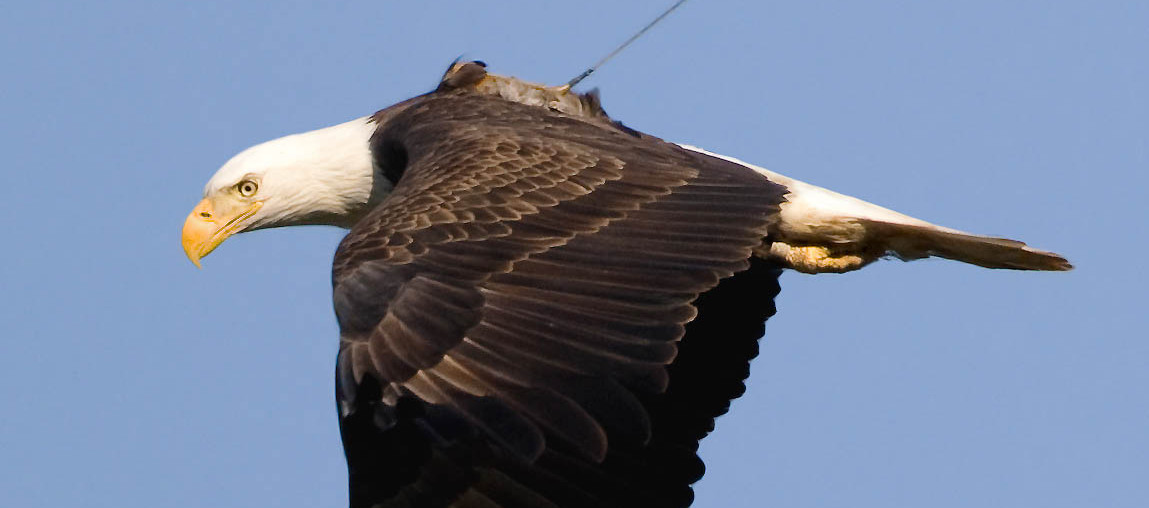National Eagle Roost Registry launched
Grace Moves East to Driftwood Shores on James River 9/14/2014
September 15, 2014The Team Sport of Peregrine Hacking
September 24, 2014
Non-breeding bald eagles are extremely social and frequently roost together near rich food resources. Communal roosts may be ephemeral congregations of birds that form to exploit short-lived food resources or may be used for decades. Roosts may be used by hundreds of birds or just two or three depending on the circumstances and the surrounding landscape structure. Because communal roosts play an important role in the life cycle of bald eagles they are protected under the “disturb and sheltering” provisions of the federal Bald and Golden Eagle Protection Act (Eagle Act) of 1940 and their management is considered within the National Bald Eagle Management Guidelines. However, since the establishment of formal management policies during the late 1960s, communal roosts have been the red-headed stepchild of management activities.
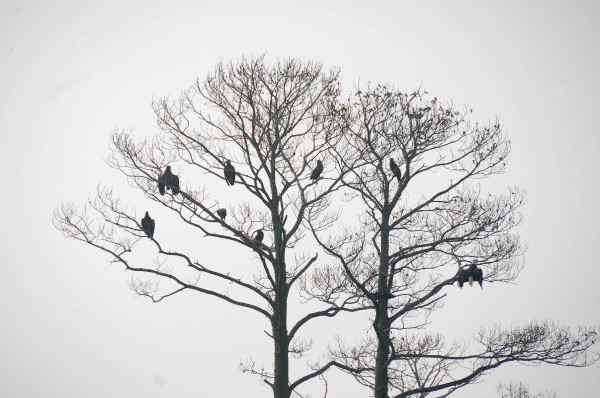
Eagles loafing in dead trees near a communal roost in North Carolina. Gathering or loafing sites are frequently used by eagles for social interaction. They are often used in the morning and afternoon and may indicate the presence of a communal roost nearby. Photo by Reese Lukei, Jr.
Despite similar protections afforded under the Eagle Act for roosts and nests, most management programs have focused primarily on nesting sites. One of the primary impediments to protecting communal roosts is the lack of information on their location. Eagle roosts are often positioned within remote areas and are notoriously difficult to locate from the ground. Delineating a single roost may take multiple biologists several early morning and late evening sessions to triangulate flight lines of birds moving in or out of active roosts. Because of the high investment required to find roosts, we have very little systematic information on their distribution. However, with the increased use of satellite transmitters programmed to record night locations, information relevant to roost networks is growing rapidly.
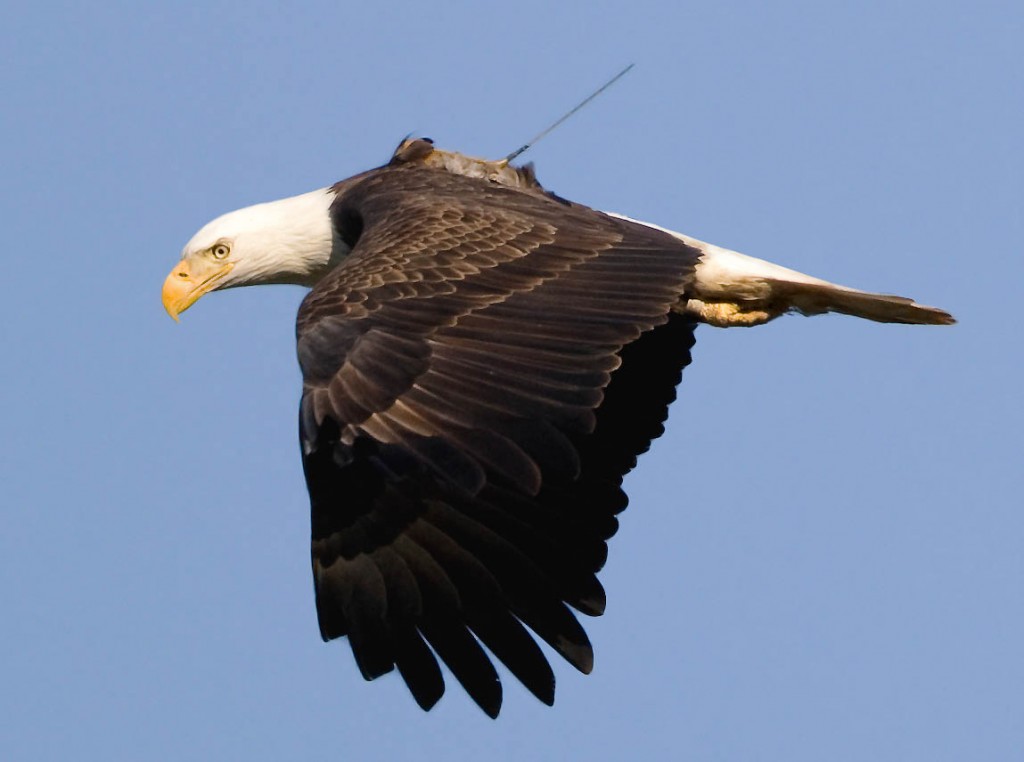
An adult eagle with one of CCB’s satellite transmitters hunts in the upper Chesapeake Bay. These birds have allowed biologists to delineate hundreds of communal roosts that were previously unknown to the management community. Photo by Robert Lin.
With funding from the U.S. Fish and Wildlife Service and the American Eagle Foundation, The Center for Conservation Biology (CCB) has been delineating and compiling roost locations throughout North America. The first phase of this project has been to use CCB’s extensive bald eagle tracking database to delineate roosts throughout eastern North America. A second phase focuses on data from other tracking projects that have information relevant to communal roosts. To date, more than 1,000 roosts have been mapped across 17 U.S. states and 5 Canadian provinces.
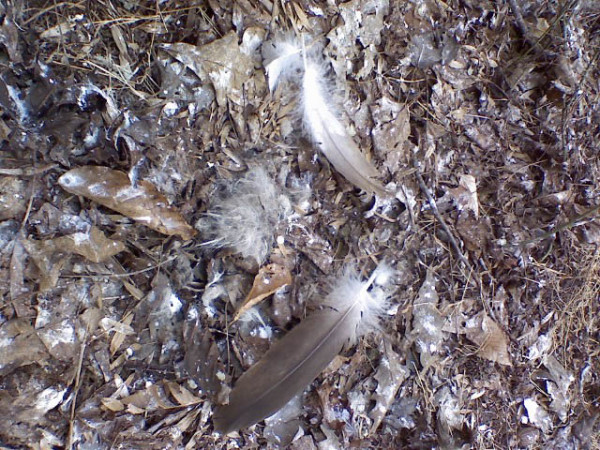
Whitewash and feathers are the telltale signs on the ground of a communal roost. The amount of material on the ground also gives some indication of the extent of use. Photo by Libby Mojica.
In early September, CCB launched an online Eagle Roost Registry that will begin the process of removing the information barrier to roost protection. The registry is an ongoing program. We are requesting information from eagle tracking projects and individuals who wish to contribute to eagle conservation by improving the state of knowledge about eagle roosts.
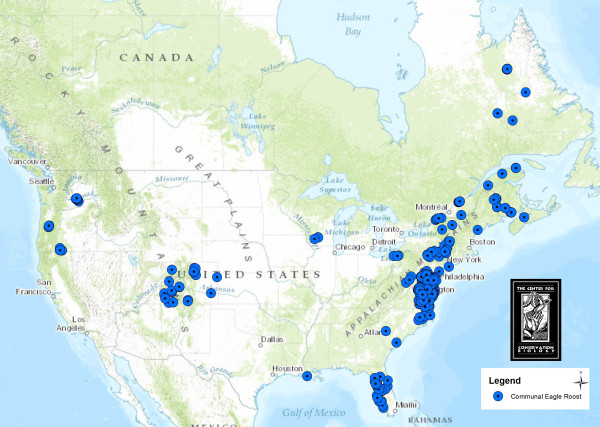
Distribution of communal roosts currently within the National Eagle Roost Registry. Visit the interactive, online map to view the full dataset. Map by The Center for Conservation Biology.
To learn more about communal roosts, download the paper by Watts and Mojica “Management implications of bald eagle roost proliferation within the Chesapeake Bay” published in the Journal of Raptor Research.
Written by Bryan Watts | bdwatt@wm.edu | (757) 221-2247
September 23, 2014

